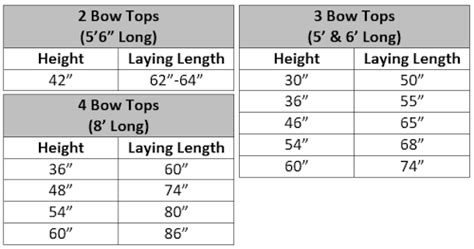Bimini Top Size Chart: Find Your Perfect Match
Choosing the right bimini top can transform your boating experience, offering crucial shade and protection from the elements. But with so many sizes and styles available, finding the perfect fit can feel overwhelming. This comprehensive guide will walk you through everything you need to know about bimini top sizing, helping you make an informed decision and enjoy years of sun-protected boating. We'll even address some frequently asked questions to ensure you're completely prepared.
Understanding Bimini Top Measurements
Before diving into specific size charts, it's crucial to understand the key measurements involved. Bimini tops are typically sized based on the width and length of the area they're meant to cover. These dimensions are usually measured in inches or feet.
- Width: This refers to the distance across the boat's beam (the widest part of the boat). Your bimini top's width needs to be wide enough to comfortably cover the area you want shaded. Consider adding a few extra inches for overhang to ensure ample protection.
- Length: This measures the distance from the mounting point (usually on the boat's gunwale or frame) to the back of the bimini top. The length determines the amount of shade provided from front to back. Again, a little extra length is always beneficial.
Important Note: Always measure your boat's dimensions before purchasing a bimini top. Incorrect measurements can lead to a poor fit, hindering its effectiveness and even causing damage. Use a measuring tape and take several measurements to ensure accuracy. Consult your boat's manual if you're unsure about where to take measurements.
Common Bimini Top Sizes and Their Applications
Bimini tops come in a wide array of sizes to accommodate various boat sizes and styles. Here are some common sizes and their typical applications:
- Small Bimini Tops (under 5ft width): Ideal for small fishing boats, jon boats, or inflatable dinghies. These offer basic sun protection in compact spaces.
- Medium Bimini Tops (5-7ft width): Suitable for most small to medium-sized center console boats, pontoon boats, and small cuddy cabins. They provide decent shade for several occupants.
- Large Bimini Tops (7-9ft width): Perfect for larger center consoles, pontoon boats, and some smaller dual consoles. They offer extensive shade coverage for a more spacious seating area.
- Extra-Large Bimini Tops (over 9ft width): Designed for larger boats, including large dual consoles, walkarounds, and some smaller yachts. These provide maximum sun protection for a larger number of passengers.
Where to Find a Bimini Top Size Chart?
Unfortunately, there isn't one universal bimini top size chart. The sizing varies greatly depending on the manufacturer and the specific design of the bimini top. To find the correct size chart, you need to:
- Identify the Brand: Knowing the manufacturer of your chosen bimini top is essential.
- Check the Manufacturer's Website: Most reputable manufacturers provide detailed specifications and sizing charts on their websites. Look for a "Specifications," "Dimensions," or "Size Chart" section.
- Contact the Seller: If you're buying from a retailer, contact their customer service. They can often provide assistance in determining the correct size based on your boat's dimensions.
How to Measure Your Boat for a Bimini Top?
This is a crucial step! Inaccurate measurements lead to a poorly fitting and ineffective bimini top. Here's a step-by-step guide:
- Determine the Mounting Points: Decide where you want to mount your bimini top. This is usually along the gunwales or a dedicated frame.
- Measure the Width: Measure the widest point of your boat between your chosen mounting points. Add at least 2-4 inches for proper overhang.
- Measure the Length: Measure the distance from the front mounting point to the desired back position for the bimini. Add a few inches for desired overhang.
- Note the Height: Consider the height you need. Most bimini tops have adjustable heights. However, knowing the approximate height requirement will help you choose a suitable model.
- Record Measurements: Keep a detailed record of your measurements to share with the seller or manufacturer.
What Frame Material Should I Choose for My Bimini Top?
This is a matter of preference and budget. Common frame materials include:
- Aluminum: Lightweight, durable, and relatively inexpensive.
- Stainless Steel: Highly durable and corrosion-resistant, but more expensive.
What Fabric is Best for a Bimini Top?
Bimini top fabrics vary in material and UV resistance. Consider the following:
- Polyester Canvas: A popular, durable, and relatively inexpensive option.
- Acrylic Canvas: More expensive but offers superior UV protection and water resistance.
Conclusion
Choosing the right bimini top size is critical for optimal shade and protection. By understanding the key measurements, utilizing manufacturer size charts, and accurately measuring your boat, you can confidently select a bimini top that perfectly fits your needs. Remember to always consult the manufacturer's instructions and consider factors such as frame material and fabric type to ensure a long-lasting and enjoyable boating experience.

